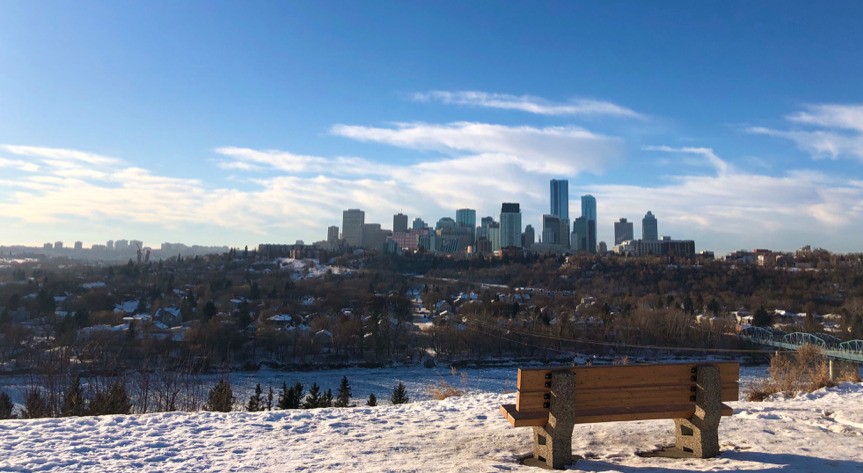I grew up in Forest Heights, a neighbourhood in southeast Edmonton, overlooking the North Saskatchewan River. The neighbourhood is known for landmarks such as McNally High School, Forest Heights Elementary School, and Forest Heights Park- the latter of which boasts one of the best views of Downtown Edmonton.
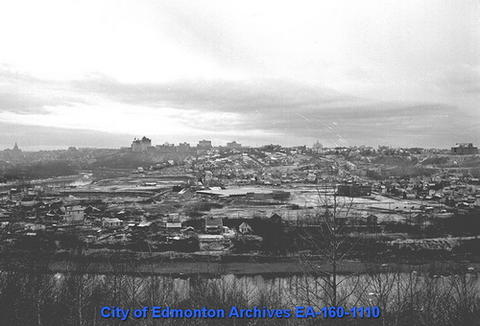
Developed by Windsor Realty in 1911, Forest Heights was officially made part of Edmonton in 1913. The neighbourhood was previously used as agricultural land until the 1940s when housing demands after the Second World War pushed for the area to be developed into a residential sector.
True to the name, the neighbourhood has massive elm trees that canopy the streets which make walking around feel like you are entirely cut off from the rest of the city. Most of my childhood memories are situated around this neighbourhood, and I wanted to explore the histories of an area that always intrigued me.
Between 79th Street and Wayne Gretzky Drive, and along 101 Avenue you can find the Edmonton Jewish Cemetery, the former Patricia Motel, and a section of the Capilano Ravine. Studying history with a neighbourhood and location focus allows for exploring diverse stories that exist within metres of each other. I think recognizing this fact can allow us to understand one another better and appreciate our city’s diversity. More so, the power of storytelling through place has the power to connect people across their differences and time itself.
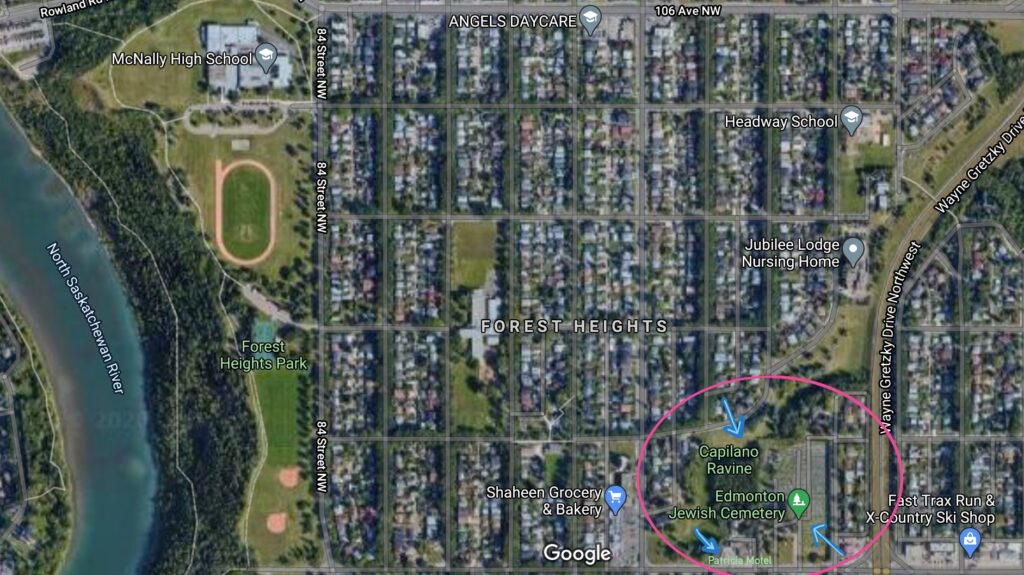
Patricia Motel
If you know the area well, you likely remember the Patricia Motel as a rundown hospitality space located at 7730 101 Avenue. Described by most residents as “sketchy” or an “eyesore,” the place gave me the creeps for most of my childhood. We would pass the motel on our drives home from the North End or Sherwood Park, and there were frequently police cars or various other altercations in front of the motel.
Growing up, it seemed like an odd place for a motel. Forest Heights is not incredibly close to Downtown or the industrial sector. The motel was situated on the outskirts of a residential area. It seemed so rundown, and I wondered why they never bothered to tear it down.
In 2018, in the middle of one June night, there was a propane explosion in a shed behind the motel. Residents awoke to the sound of a blast and sirens, though the motel and the nearby ravine, thankfully, did not catch fire. The case was meant to explore the possibility of arson, but a cause for the mysterious explosion was never discovered. In reports about the explosion, many residents expressed their dissatisfaction with the motel still existing in the quiet neighbourhood and their hopes that it would be torn down.
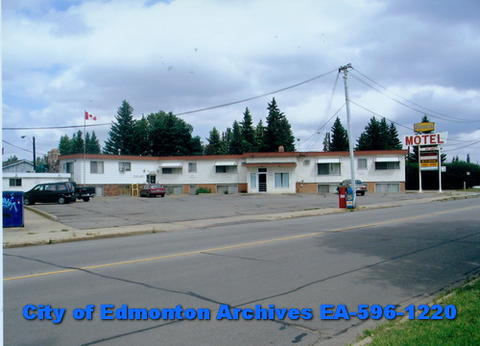
When it was constructed and first operating, the motel was a very different place. It was built in 1957 and originally owned by Ed Leger, a land developer and one of Edmonton’s city councillors. Notably, at the time, one of the main roads into town was 101 Avenue which connected east to Baseline Road. Coming into town, many visitors would pass the motel, so originally, the Patricia motel was located in a critical spot for incoming visitors.
David Hamilton, who owns the land now, spent his first night in Edmonton at the Patricia Motel in 1969. Hamilton notes that the motel was a nice place with a swimming pool that was considered modern. Each room had a bathtub, and Hamilton notes that the motel was typical of the 1950s and 1960s aesthetic. However, over time the motel slowly lost its original charm and, in its final years, served as a place for clients from various social agencies to stay for long-term periods.
Eventually, the motel was torn down with plans to develop the land into a senior’s apartment complex with paved paths throughout Capilano Ravine. But, at one time, like many other past businesses and buildings, the motel was a hip and relaxed place to stay in Edmonton. It is easy to assume that the motel was always rundown, but when looking into the motel’s history, it is essential to recognize that it once served as a community space and modern stop-over for visitors.
Capilano Ravine Ski Jump
Capilano Ravine is located North of where the Patricia Motel once stood. Although technically not part of Forest Heights, the Ravine cuts into the residential area, and it consists of a park area which many residents traverse for walks.
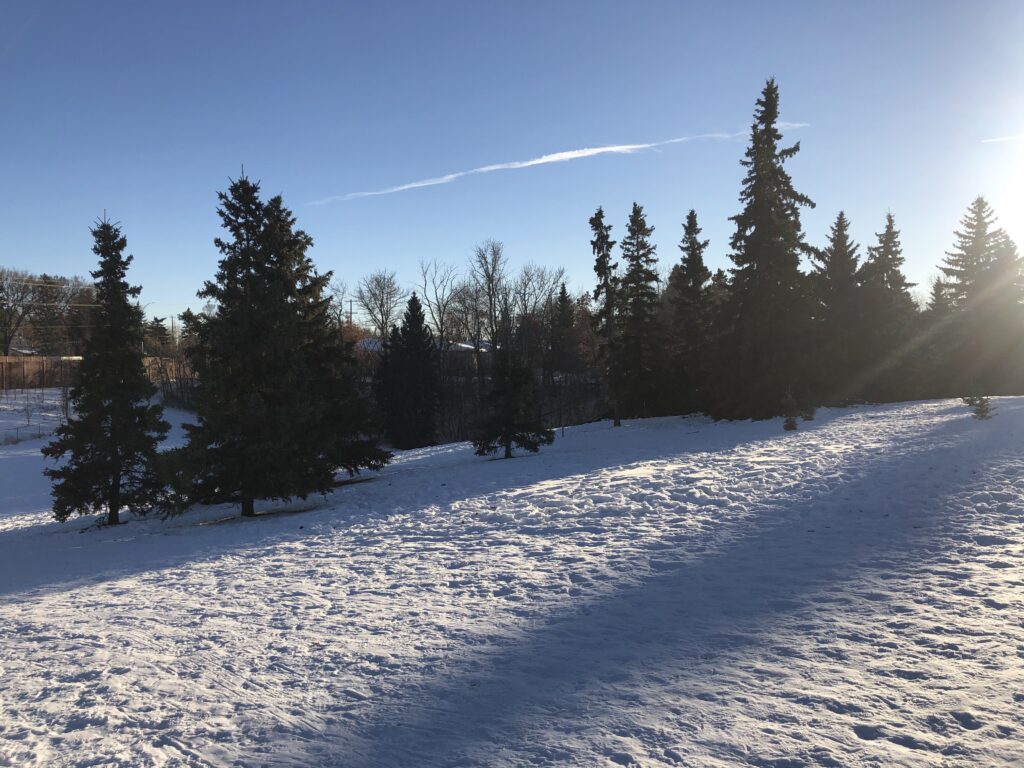
The City of Edmonton Archives contains pictures of a 1935 ski jump located in Capilano Ravine. As noted before, Forest Heights during this time was mostly farmland, which means this ski jump was likely in the middle of natural and undeveloped land. According to the Ski Jumping Archive, the coordinates where the ski jump existed are 53.544284,-113.444470 placing it between the Edmonton Jewish Cemetery and the Jubilee Lodge.
I found it interesting coming across yet another story of Edmontonians navigating the winter climate to find unique ways to partake in recreation. In my little neighbourhood, in the park where I used to walk on my way to Hardisty Junior High, there once stood a massive ski jump for all adrenaline fanatics to enjoy.
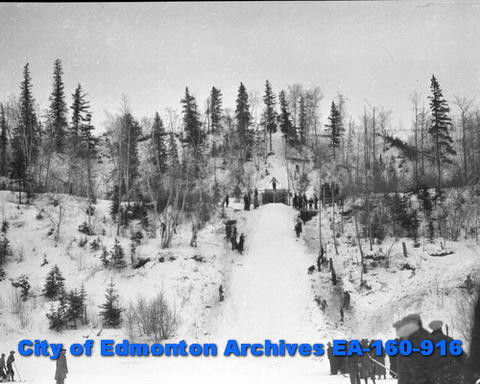

Edmonton Jewish Cemetery
Next door to the former Patricia Motel is the Edmonton Jewish Cemetery. Mr. Abraham Cristall, known as Edmonton’s first Jewish citizen, purchased the land (located at 7622-101 Ave) on May 26, 1907, to develop a Jewish cemetery.
In the beginning, the cemetery consisted of a wooden shed used as a shelter, but after 1930, money was raised to build a permanent chapel. Later, in 1947, after the Second World War, a cenotaph was placed in the cemetery.
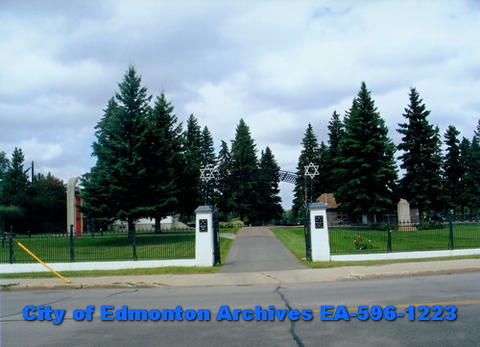
A guide was developed by Cory Felber, who photographed every headstone to be added to the Jewish Online World Burial registry. By doing so, relatives and friends worldwide can see their loved ones’ gravestones online.
The Edmonton Chevra Kadisha runs the cemetery by volunteer help and serves the community’s families by offering 24-hour services to grieving families. It also uniquely serves all denominations in the Jewish community: Orthodox, Conservative, and Reform. The cemetery has served the Jewish community from the onset of Jewish history in Edmonton.
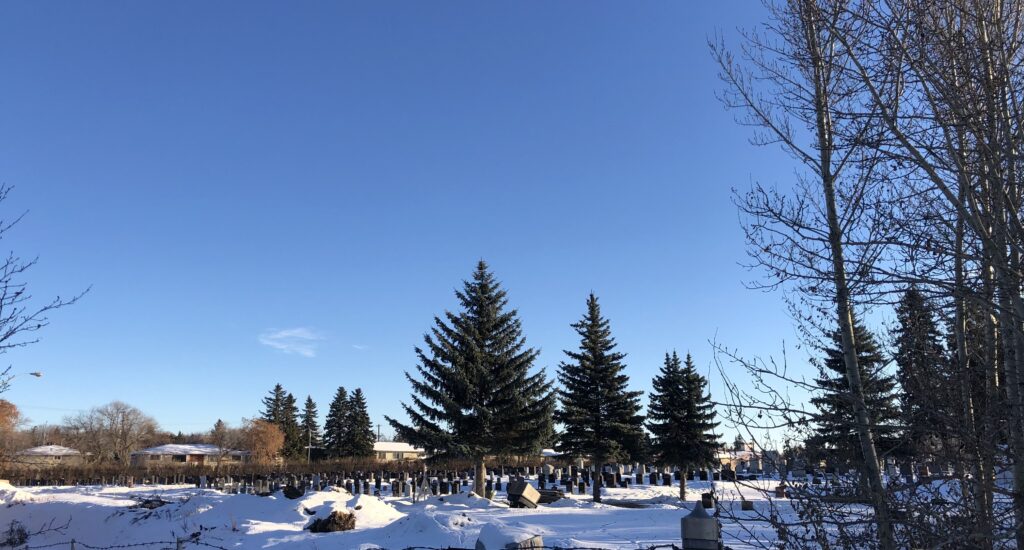
Although I have long since moved away from the neighbourhood, I found it interesting to reflect that I knew virtually nothing about these three locations when growing up. I passed by them almost daily, ever curious about their mysteries, but never knew much more than what I could see from the outside. There is something to be said about learning about your place and looking beyond the surface. It is also interesting to reflect on the range of stories that exist between neighbours. The history of the Edmonton Jewish Cemetery thrived alongside the history of the Capilano Ski Jump.
Knowing the legacies of the area you live in and understanding others’ stories, triumphs, losses, and adventures makes the human experience more understandable and all the more fascinating.
Other sights from around Forest Heights
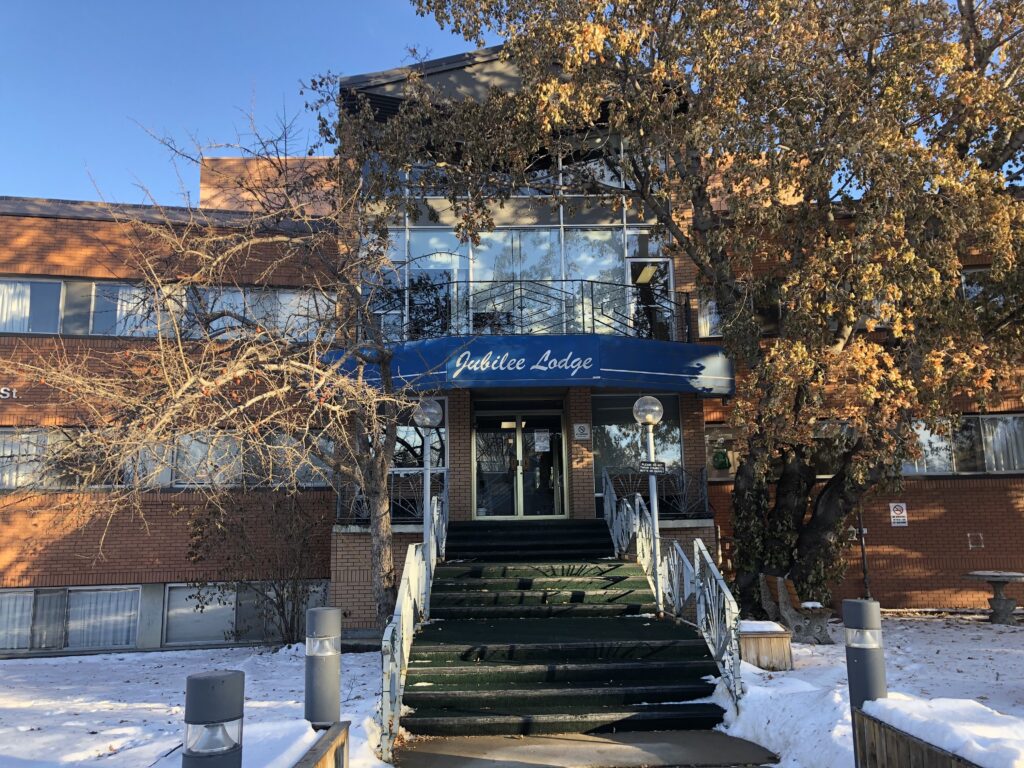
Jubilee Lodge: Located at 10333 76 St on the edge of Capilano Ravine and overlooking Wayne Gretzky Drive. The lodge has offered continuing care for over 50 years and has space to accommodate 154 residents. The facility is especially known for its 10,000 square foot central atrium that brings in lots of beautiful natural light.
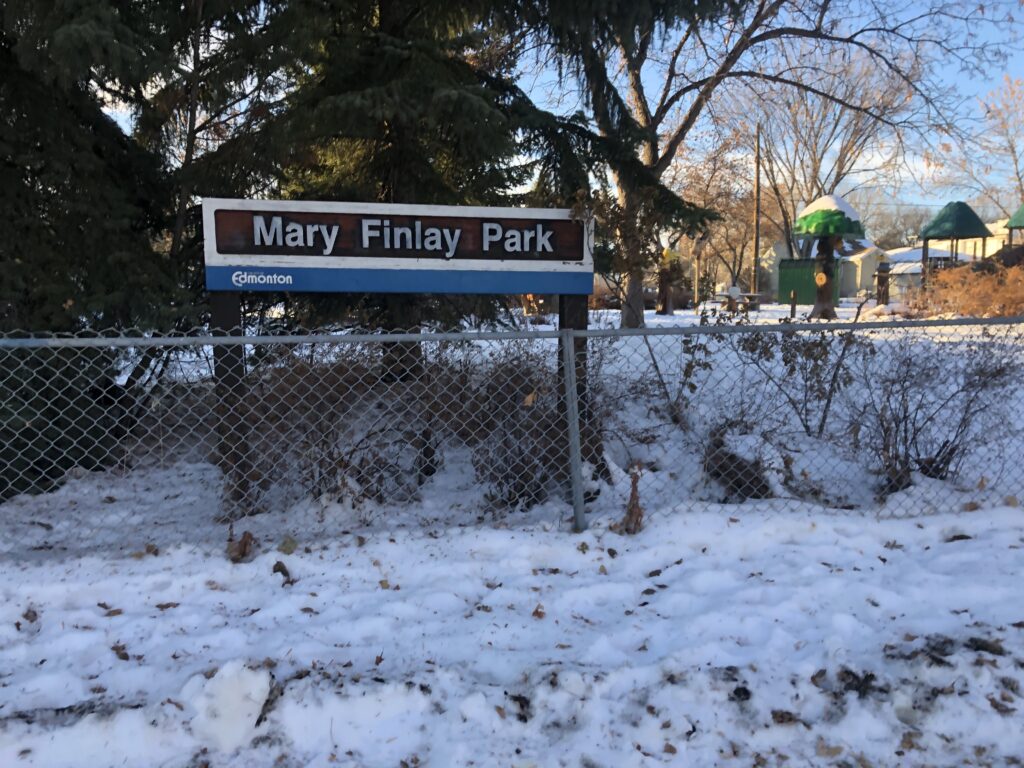
Mary Finlay Park:Located at 10150 80 St. and features a small playground and spray park. Neighbouring is Forest Heights Community League and skating rink. Mary Finlay came to Edmonton in 1909 and worked for the Beulah Mission, an organization dedicated to ensuring that women and unmarried mothers had a safe place to stay. Finlay was superintendent of the home for 42 years. Over 5300 ladies stayed at the home and 4660 babies were born. The park now serves as a lovely place for mothers and families to relax.
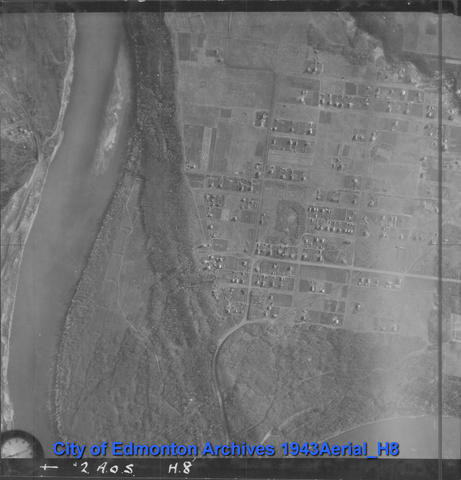
Forest Heights 1943— The lower left corner is where Riverside Golf Course would later be developed, and above is where McNally High School is now located. As you can see, Forest Heights at this time is mostly farmland and undeveloped.
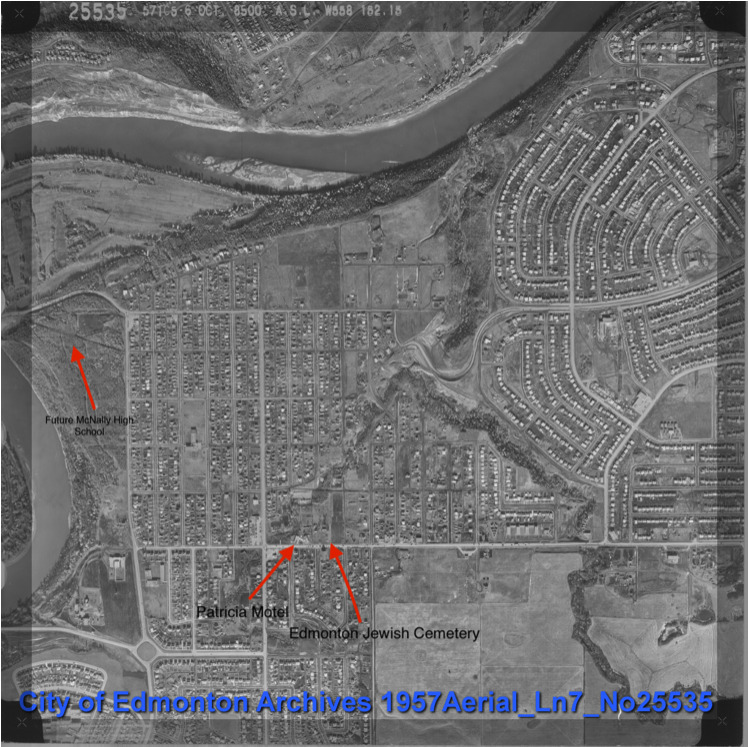
Forest Heights 1957— 1957 Aerial Line 7, No. 25535. Image courtesy of the City of Edmonton Archives. Aerial shot of Forest Heights the year the Patricia Motel was built.
Allie Quigley © 2021

